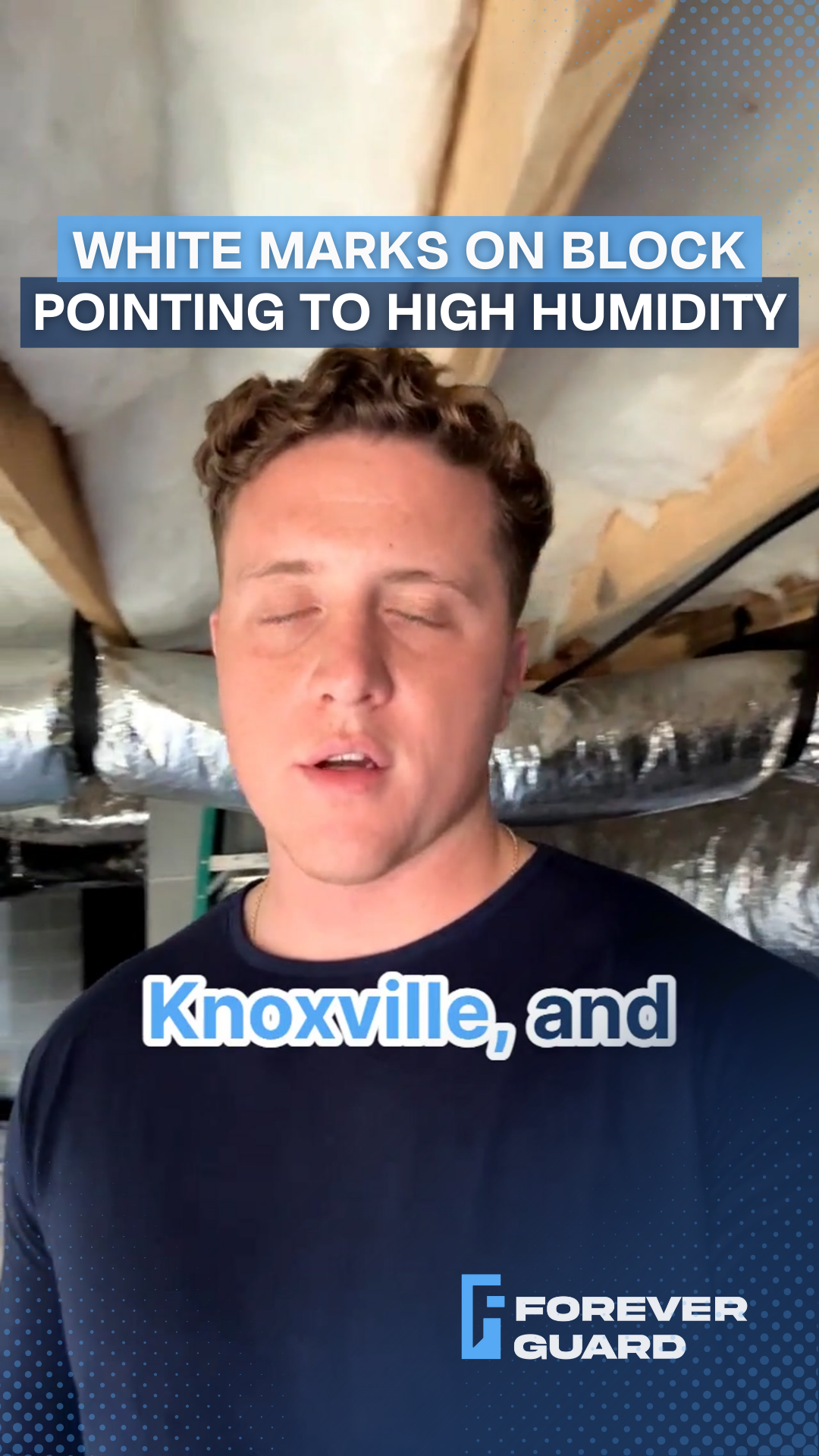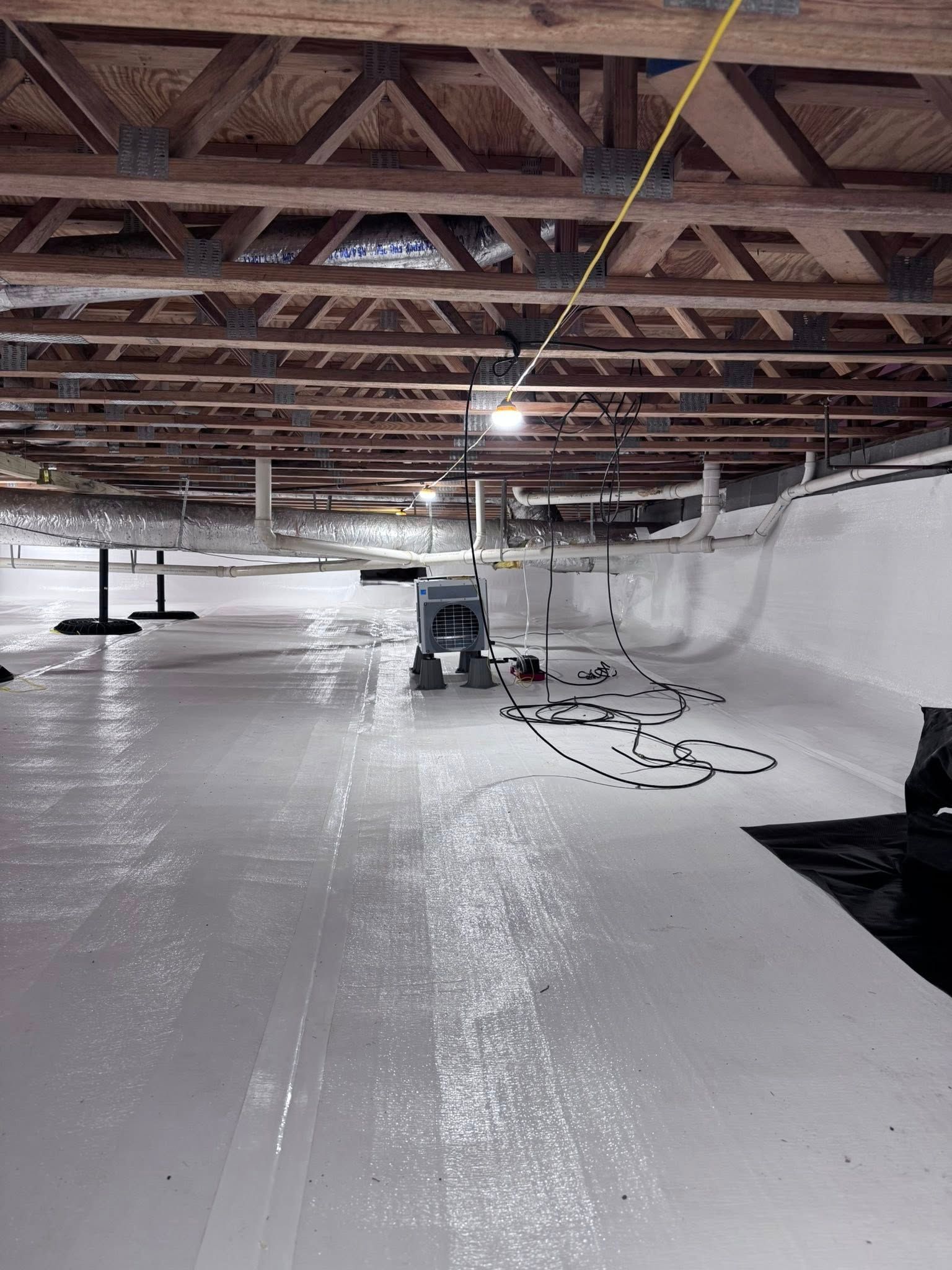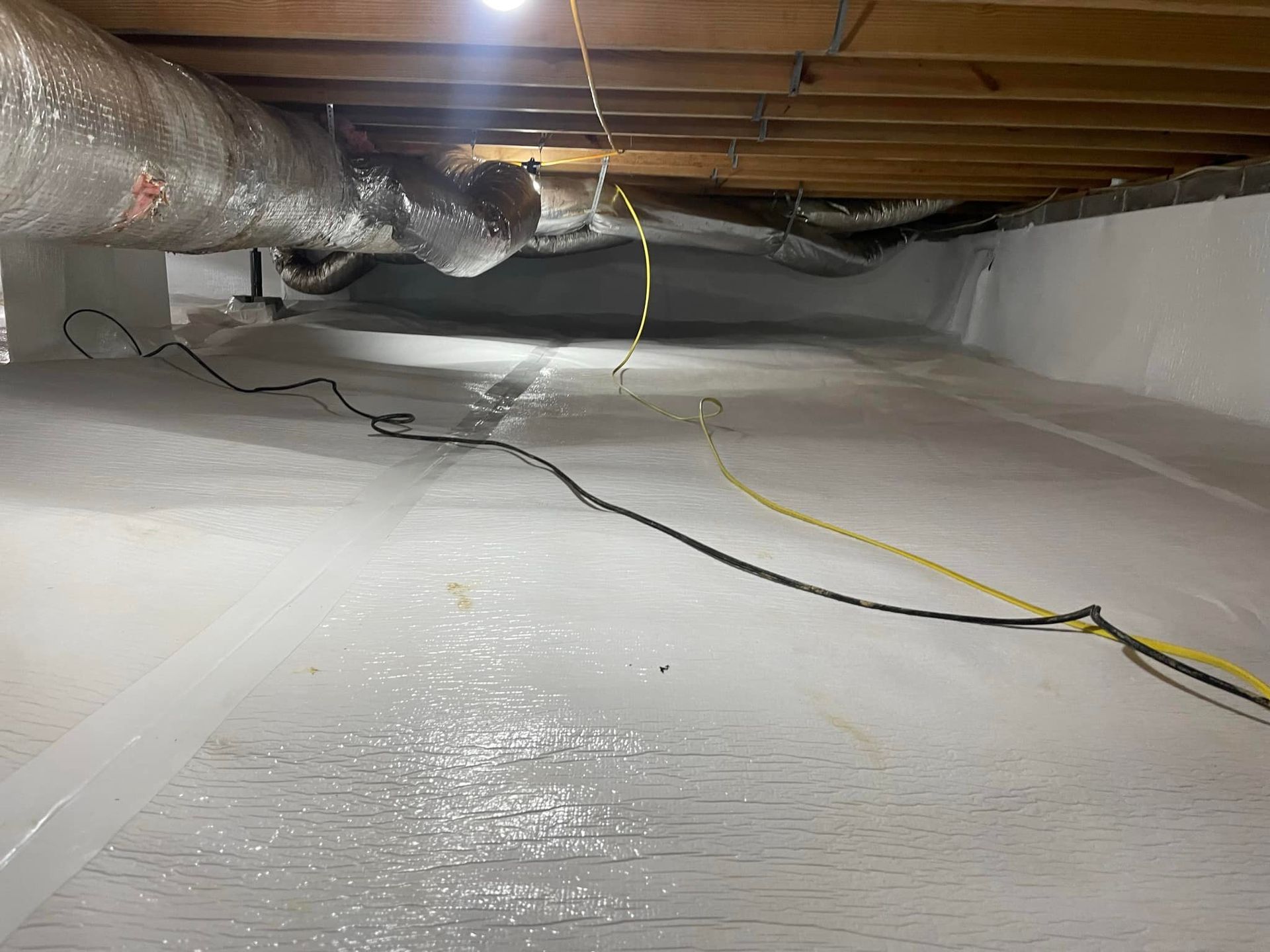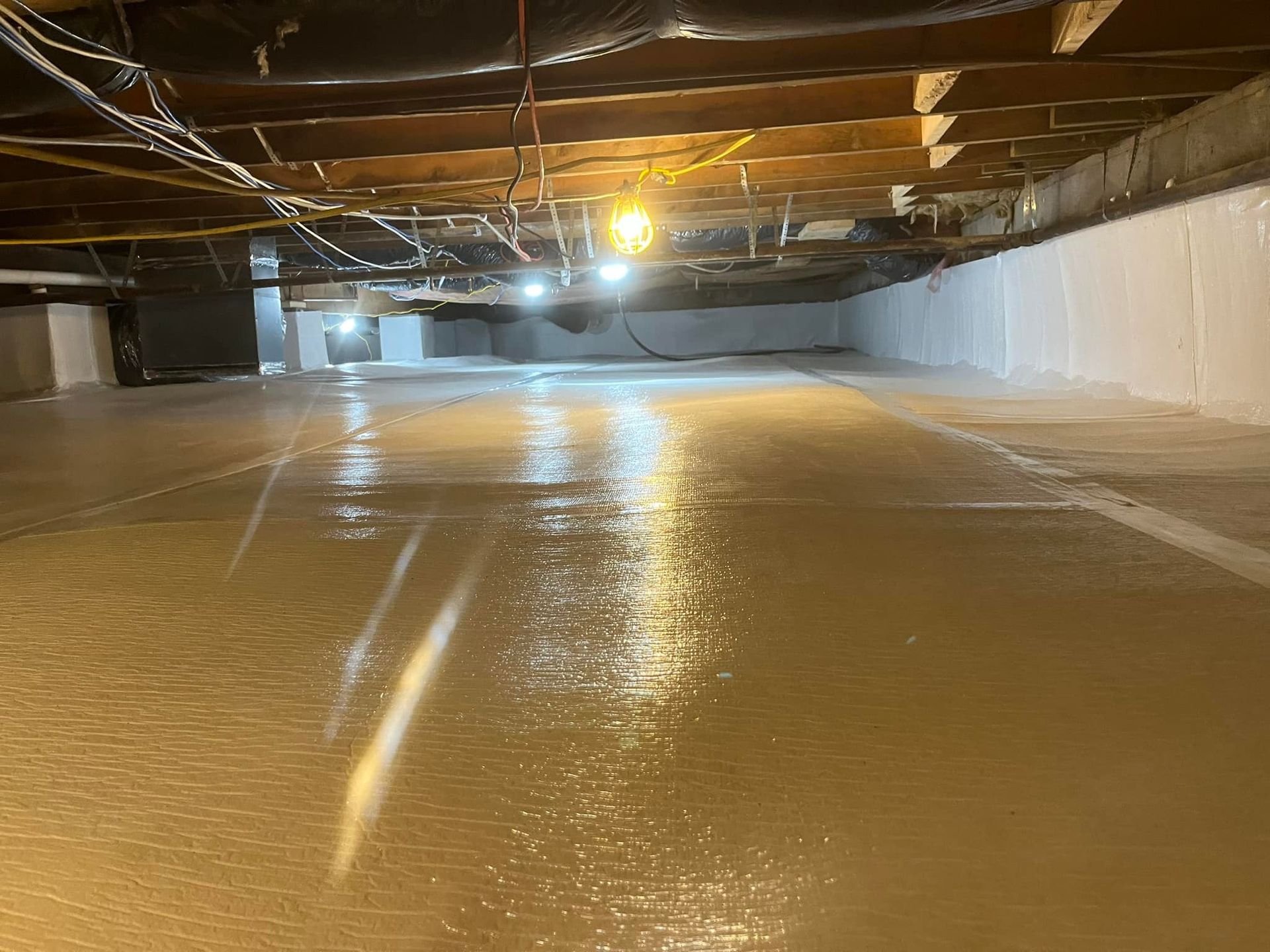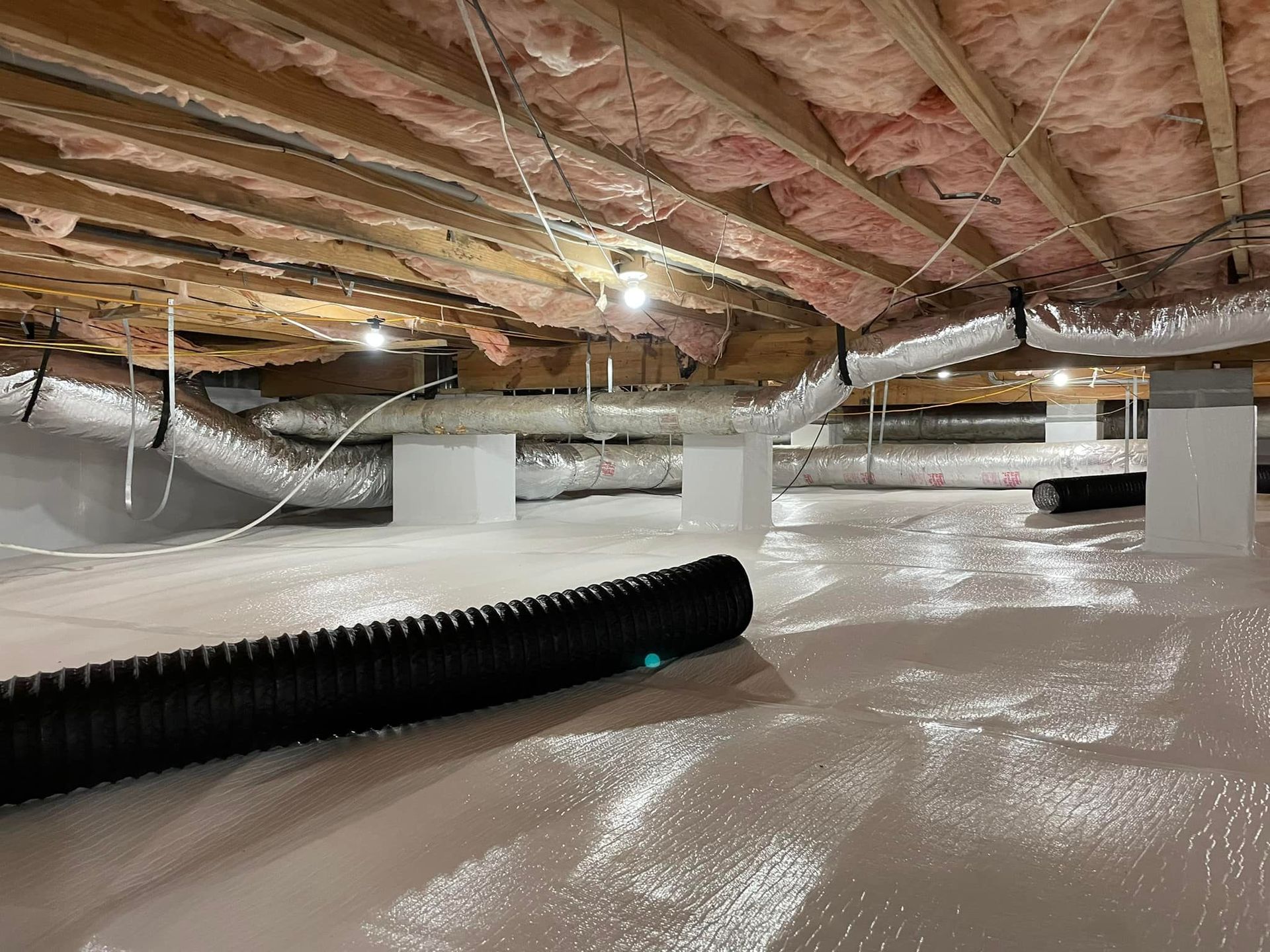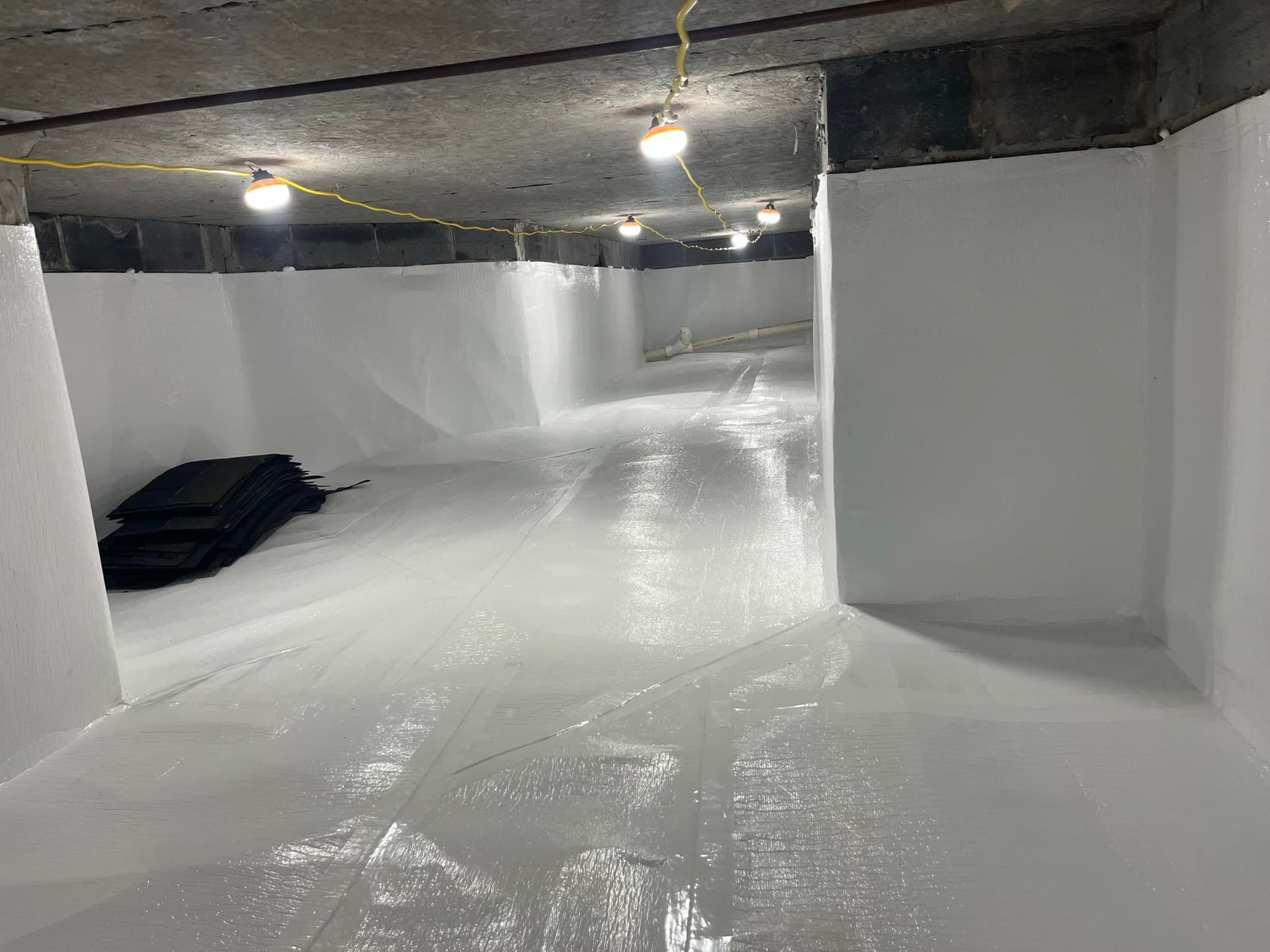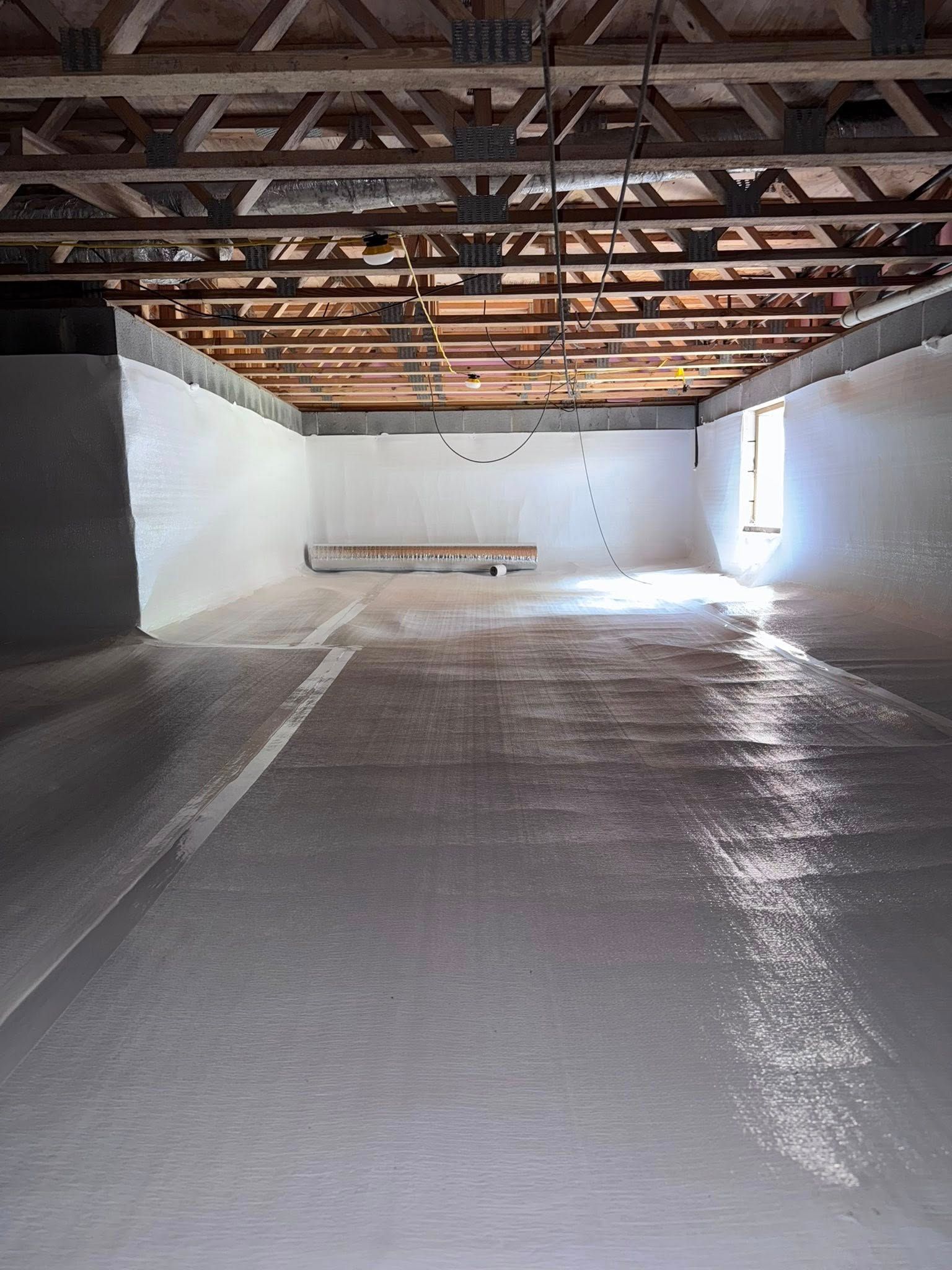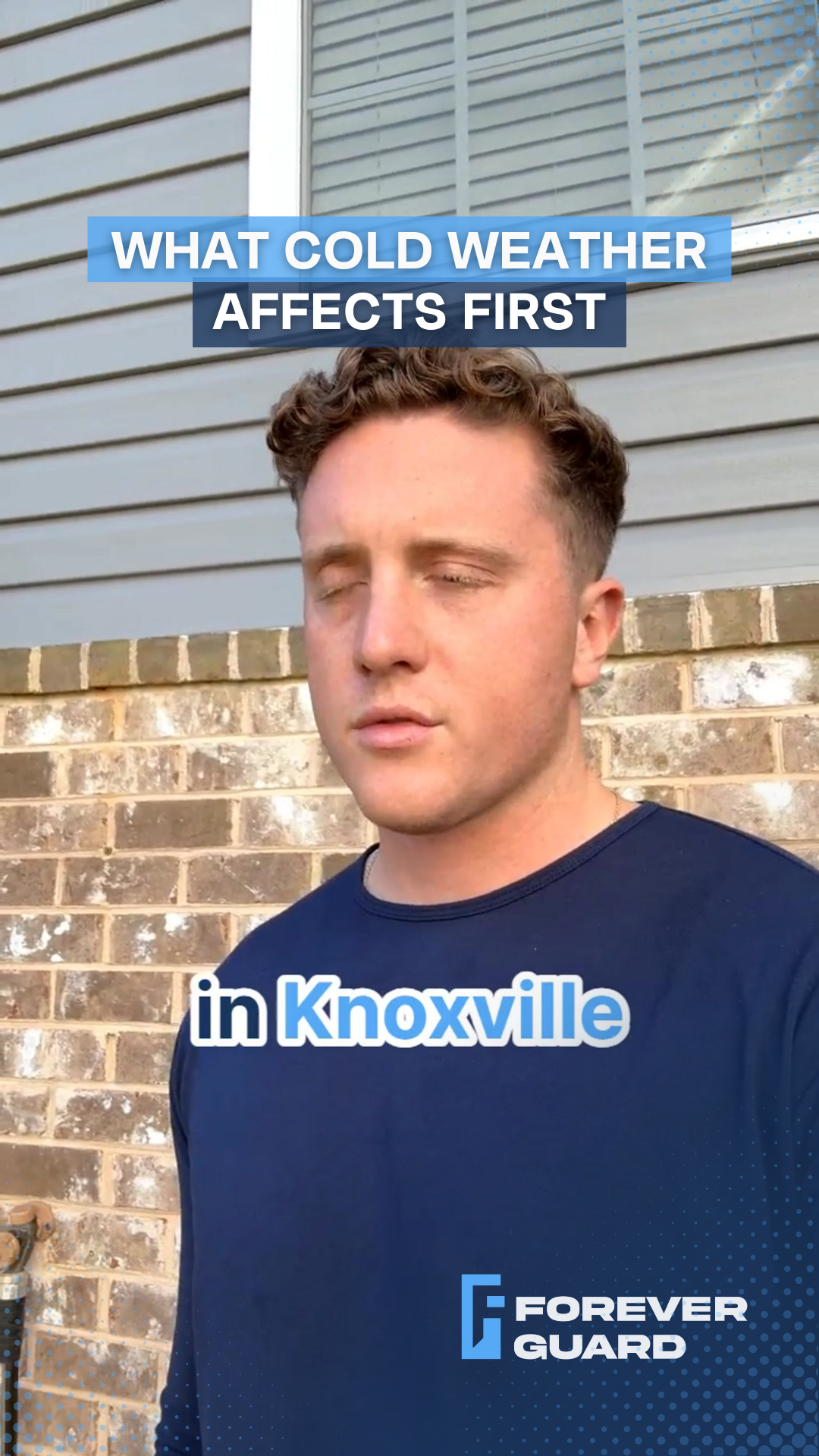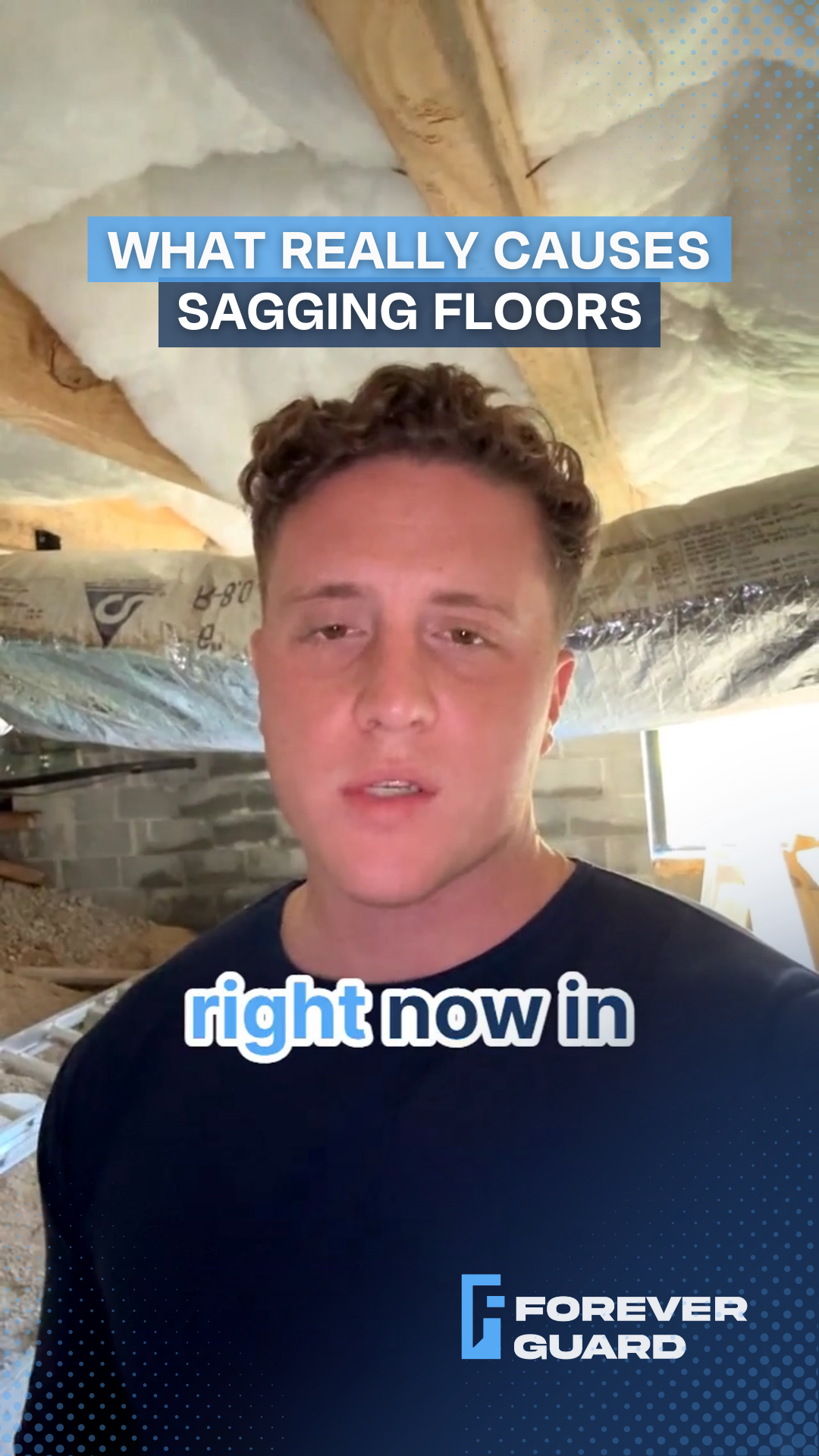That Strange Smell in Your Crawl Space? It Might Be Failed Encapsulation
When Your Crawl Space Protection Becomes the Problem
A professional explains why that mysterious odor might be coming from your vapor barrier
Just finished a job at a 100-year-old house where the homeowners couldn't figure out why their crawl space smelled like cat urine.
They'd paid a big billboard company for encapsulation, thinking they were protecting their home. Instead, they got a problem that literally stunk.
The culprit? A delaminating vapor barrier.
That's what happens when cheap materials start breaking down - they separate into layers and create strange odors.
It's frustrating because these homeowners thought they were doing the right thing, but ended up with a solution that made things worse.
Why Quality Materials Matter
Here's what most homeowners don't know: not all vapor barriers are created equal. That "reinforced" barrier the previous company installed? It was falling apart. When we see this kind of failure, it usually means someone cut corners on materials to cut costs.
We replaced everything with 20 mil YCS vapor barrier. It's thicker, more durable, and won't delaminate like the cheaper options. Think about it this way - you wouldn't use paper to waterproof your roof, so why trust thin material to protect your crawl space?
Warning signs your vapor barrier might be failing:
- Strange odors (especially chemical or ammonia-like smells)
- Visible separation or peeling
- Brittle or cracking areas
- Moisture getting through
- Musty smells returning
Hidden Problems in Hard-to-Reach Places
This old house had some seriously tight spots - we're talking belly-crawl areas where you can barely move. That's exactly where the previous company cut corners. They figured if homeowners couldn't easily check these areas, who would know?
But here's the thing: every skipped corner, every rushed seal, every ignored spot becomes a weak point in your home's protection. In this case, they left fungal growth untreated and didn't properly seal multiple areas. These aren't just cosmetic issues - they're compromising your entire crawl space system.
Beyond the Barrier: A Complete Solution
Fixing this space meant more than just replacing bad materials. We:
- Installed a larger dehumidifier to handle the space properly
- Ran ductwork into those tight, hard-to-reach areas
- Treated all the fungal growth they left behind
- Properly sealed four different access points
- Added weather stripping for better efficiency
This is what a complete solution looks like. It's not just about laying down vapor barrier - it's about creating a system that actually protects your home.
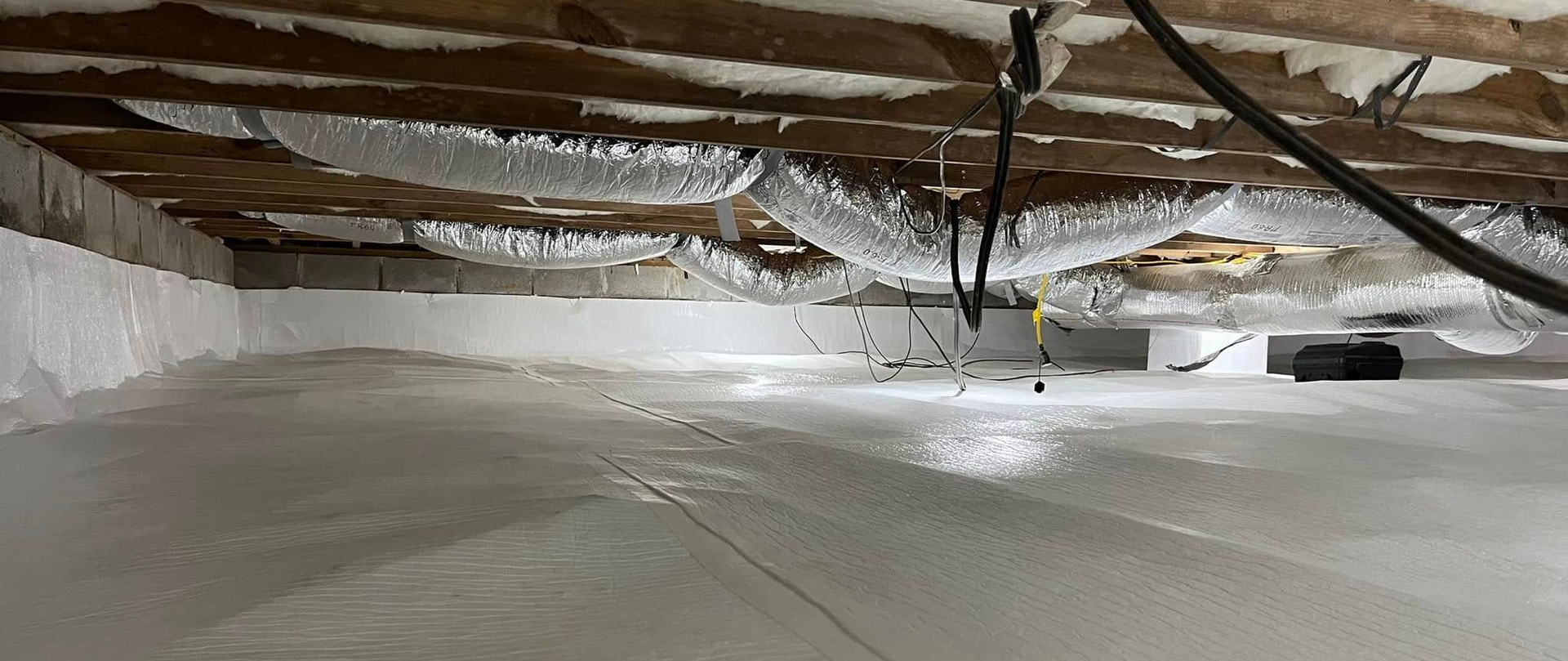
Protecting Your Investment
I've seen too many homeowners learn the hard way that cheaper isn't better. When you're protecting something as valuable as your home, you need to know what you're getting.
Here's what really matters:
- Quality of materials (thickness and durability)
- Complete coverage (even in tight spots)
- Proper treatment of existing issues
- Professional installation
- Thorough sealing of all access points
Remember: paying for quality work once costs less than paying for cheap work twice.
Don't Wait Until It Smells Wrong
Look, nobody wants to think about their crawl space until there's a problem. But by then, you're usually looking at a bigger, more expensive fix - just like this 100-year-old home that needed a complete do-over.
A properly encapsulated crawl space should:
- Stay dry year-round
- Have no unusual odors
- Maintain consistent humidity levels
- Show no signs of fungal growth
- Have well-sealed access points
If you're noticing strange smells, seeing moisture, or worried about your current encapsulation, don't wait. Small issues become big problems, and big problems become expensive emergencies.
